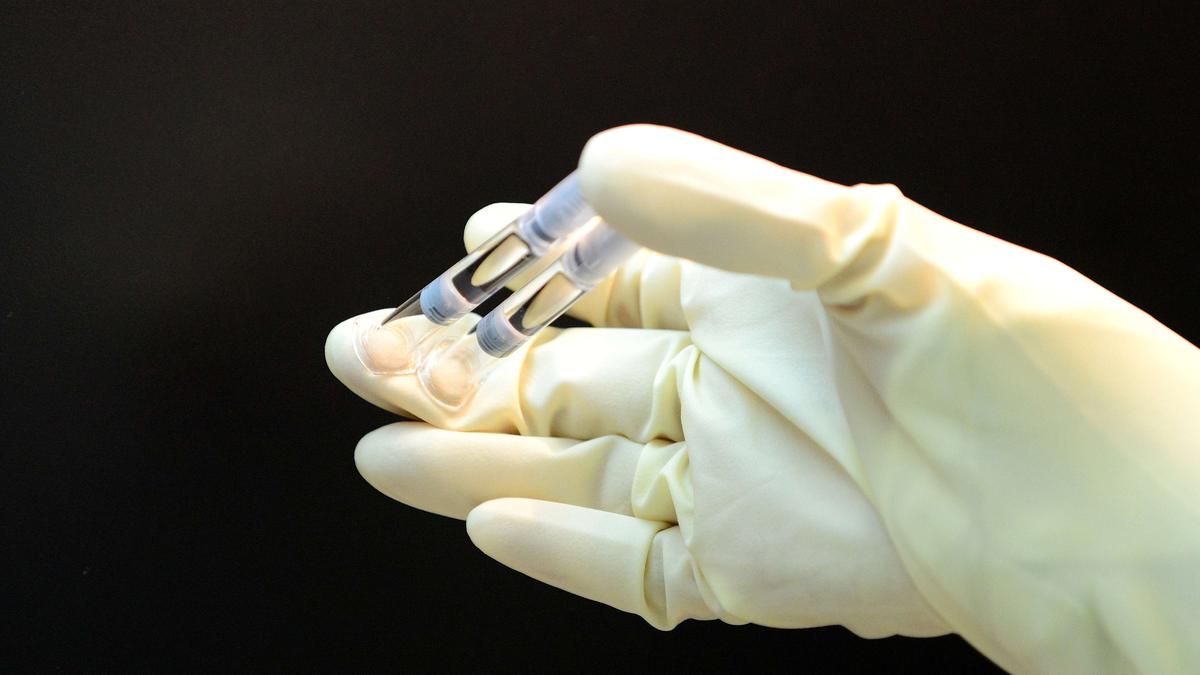
Biosimilars and the need for a policy prescription Premium
The Hindu
Understanding biosimilars, biologics, and the challenges surrounding their regulation and pricing in the pharmaceutical industry.
To understand the class of drugs known as biosimilars, it is first necessary to understand the class of drugs described as biologics. Traditionally, biologics were derived through natural processes from living organisms. For example, one of the earliest biological drugs dating back to the 19th century was the anti-diphtheria serum, which was manufactured from the serum extracted from horses that contained antibodies to the disease. The biotechnology revolution spurred by the invention of gene-splicing technology by Cohen-Boyer opened the door for the creation of more effective biologicals like trastuzumab, which revolutionised the treatment of a specific type of breast cancer by targeting cancerous cells.
The more recent biologicals, starting with trastuzumab, typically contain monoclonal antibodies which are manufactured in the cells of genetically-modified organisms. These monoclonal antibodies are adapted with the help of biotechnology to target specific types of cells associated with cancer or other diseases for which these drugs are developed. Given the complexity of developing and manufacturing biologicals, especially monoclonal antibodies, it is no surprise that biologicals are astronomically priced. Countries around the world have been keen to ensure more competition in the market by allowing competitors to manufacture and market copies of biologicals. These copies are called biosimilars.
There is plenty of empirical evidence demonstrating that increased competition in the case of small molecule drugs leads to significant price erosion, thereby improving accessibility and reducing costs to patients. These small-molecule drugs, unlike biologicals, are not manufactured in living organisms and therefore, it is easier to control their manufacturing process. Countries like India have an abundance of talent with the skills to reverse-engineer these drugs to manufacture generic copies of novel small molecule drugs (for e.g. paracetamol) leading to more competition and reduced prices.
Replicating the success story of generic small molecule drugs in India will be tougher in the context of biosimilars for many reasons. To begin with, competitors who do not have access to the original cell lines of the innovator have to develop their own. This is far more complicated than reverse-engineering small molecule drugs. Given the uncertainty associated with the manufacture of biosimilars, the legal requirements to secure regulatory approval are more complicated and expensive than they are for small molecule drugs. A competitor seeking to introduce a generic version of a small molecule drug can avoid replicating clinical trials in virtually all jurisdictions as long as they can submit proof of bioequivalence, for which data can be generated through relatively inexpensive bioavailability studies. However, in the case of biosimilars, because of the science involved, competitors have to repeat clinical trials for their product to prove safety and efficacy. This can be an expensive exercise. The cost, uncertainty and risk associated with clinical trials will typically be reflected in the cost of a biosimilar. Combine this with the fact that only a few companies have the capability to develop biosimilars — it is unlikely that any country will see the same degree of price erosion as was the case with small molecule generics.
Given these complexities surrounding the regulation and pricing of biosimilars, it is vital that countries put in place well thought-out policies with the twin objectives of first, building the confidence of the medical community in the safety and efficacy of biosimilars and second, towards ensuring greater competition. Unfortunately, that has not been the case with India. Countries such as the United States have been debating and legislating on this issue for more than a decade now, with laws such as The Biologics Price Competition and Innovation Act which was enacted in 2009.
In India, however, for a little over a decade now, since Indian pharmaceutical companies first began introducing biosimilars into the Indian market, there have been several controversies related to the regulatory process for the approval of biosimilars. For example, in 2015, an Indian manufacturer of a biosimilar for Razumab, used to treat macular degeneration, had to recall the biosimilar from the market after doctors prescribing the drug reported that it caused serious adverse events amongst some patients. The issue received barely any attention from the Indian media and the Indian drug regulator was, as usual, opaque in its handling of the issue. To date, there has been no clarity on what went wrong with that biosimilar.
Equally worrying have been tactics used by Swiss pharmaceutical company, Hoffmann La Roche, which has litigated extensively against Indian pharmaceutical companies introducing biosimilars that are copies of Roche’s products. Breaking from the usual strategy of suing for patent infringement, Roche has complained to the drug regulator about the safety and efficacy of biosimilars – these complaints were then amplified by the press and likely undermined the credibility of the biosimilars in question. The Indian drug regulator has done little to rebut the issues raised by Roche, despite the fact that these biosimilars have been approved by the regulator. On another occasion, Roche sued Indian pharmaceutical companies launching biosimilars for its blockbuster drug Herceptin for breast cancer, claiming misrepresentations about their biosimilars being as effective as Roche’s drug. This, despite the fact that the competing biosimilars had been approved by the drug regulator. These scare tactics likely impacted the credibility of the biosimilars in the eyes of doctors who prescribe these drugs.













